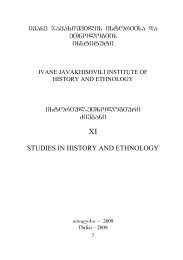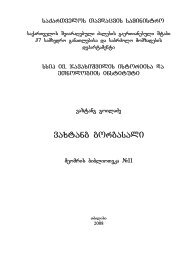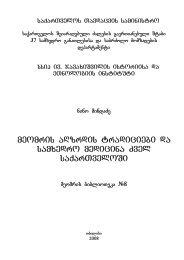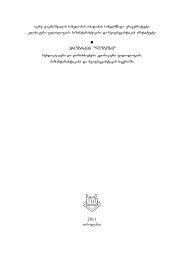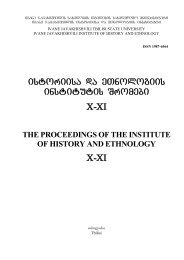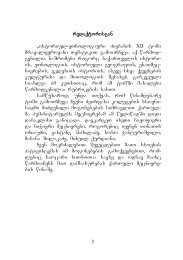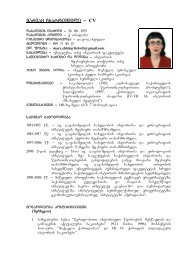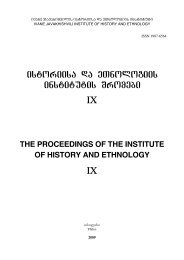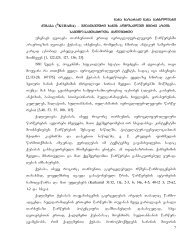programa "logosi"
programa "logosi"
programa "logosi"
Sie wollen auch ein ePaper? Erhöhen Sie die Reichweite Ihrer Titel.
YUMPU macht aus Druck-PDFs automatisch weboptimierte ePaper, die Google liebt.
merous, our understanding of them is limited to the most stereotypical formulae<br />
related to the military and building activities of the Urartean kings.<br />
The identified Urartean substrate borrowings into Armenian are too few in<br />
number to improve our understanding of the Urartean texts, but they are<br />
quite significant for reconstructing Urartean phonology.<br />
The second one is the case of Parthian, an Indo-European Iranian language<br />
that was spoken in Northern Iran from around 300 BC to 300 AD.<br />
Since the Armenian Arshakuni dynasty ruling in the early centuries of the<br />
first millennium AD represented an offshoot of the Parthian Arsacid dynasty,<br />
one can hypothesize that Parthian was the main language of the Armenian<br />
court for quite a while. As a result of this situation, numerous Parthian<br />
borrowings pertaining to all kinds of semantic domains have penetrated the<br />
Armenian language. As a matter of fact, these loanwords reflect an earlier<br />
stage of the Parthian language than bulk of the attested Parthian texts, which<br />
were composed at the time after the Parthian Arsacid dynasty was forced to<br />
yield its power over Iran to the Persian Sasanian dynasty. The number of<br />
Parthian loanwords into Armenian is comparable with the number of lexemes<br />
that are attested in genuine Parthian texts.<br />
This presentation is called at extending the list of lexical borrowings into<br />
Armenian, respectively from Urartean and Parthian. I am going to discuss<br />
two Classical Armenian words that have been commonly regarded as a part<br />
of the inherited Indo-European lexicon, and will try to show that in both<br />
cases the hypothesis of a lexical borrowing appears to be more plausible.<br />
1. Old Armenian darbin ‘(black)smith’ is routinely compared with Latin<br />
faber ‘skillful ; craftsman, artisan’ and Old Church Slavic dobrъ ‘good’,<br />
which both go back to the Indo-European proto-form *dhabhro- (see e.g. H.<br />
Acharian, 1971: 1/ 636, B. Olsen 1999: 471). This etymology, however,<br />
runs into several difficulties. On the one hand, it is not clear why the Armenian<br />
form extended the reflex of *dhabhro- with the suffix –in, which is<br />
productive only in adjectival derivation (Olsen, loc. cit., justly remarks that<br />
"the stem formation is somewhat obscure"). On the other hand, it is a priori<br />
unlikely that the Indo-Europeans, who did not excel in metal-working, nevertheless<br />
retained the inherited word for a blacksmith after coming to Eastern<br />
Anatolia, which is known to be one of the cradles of metal production.<br />
The traditional etymology of darbin is further undermined by the fact<br />
that its putative Latin and Slavic cognates appear to possess a convincing<br />
root etymology that connects them with verbal forms attested in the Baltic/Slavic/Germanic<br />
dialectal area, such as Goth. ga-dab-an ‘to be suitable,<br />
appropriate’, OCS. po-dob-ati ‘to be necessary, appropriate’, Latv. dab-ât<br />
‘to be pleasing; to favor’ etc. The adjective *dhabhro- ‘appropriate, conve-<br />
266





